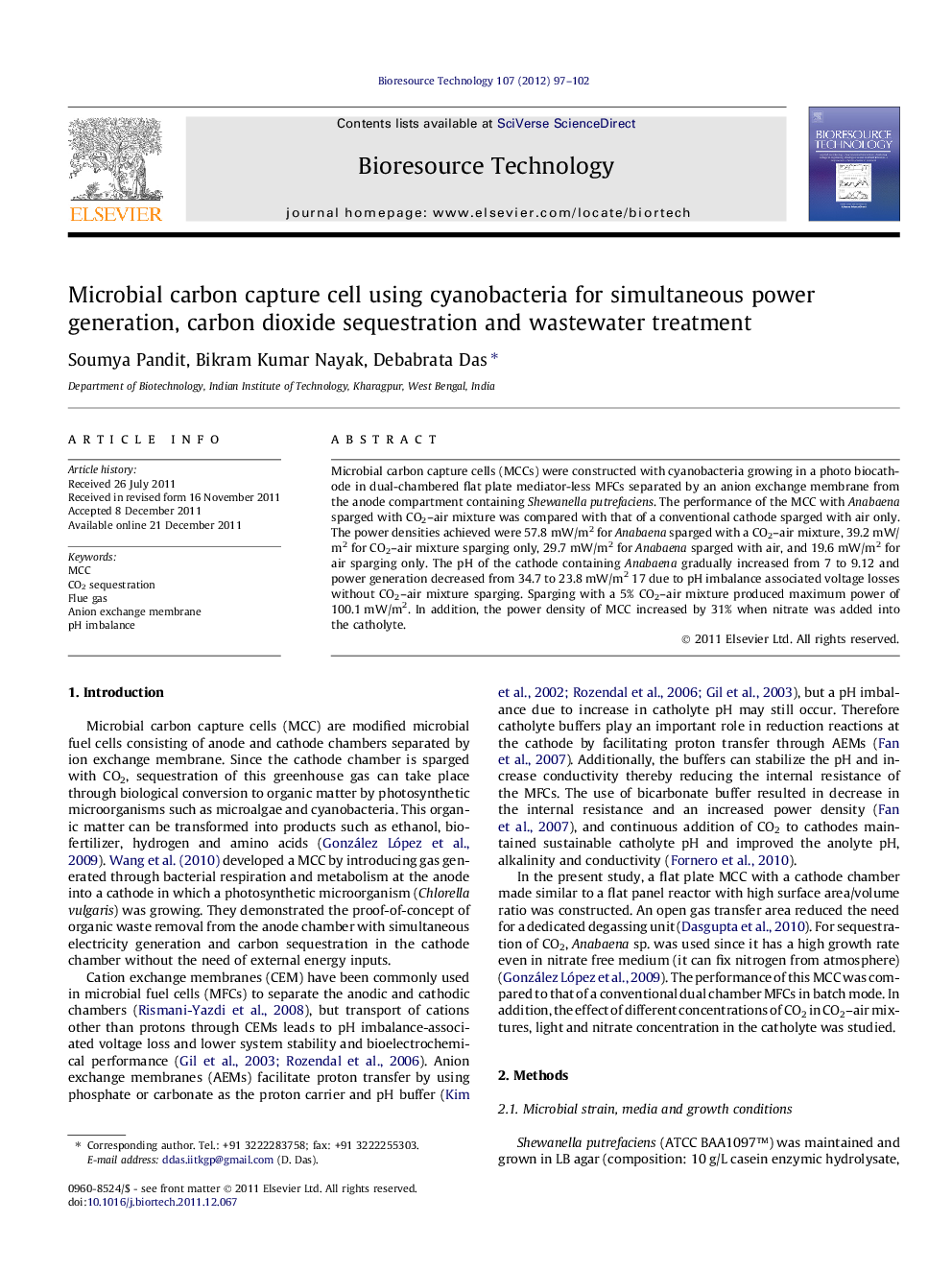| Article ID | Journal | Published Year | Pages | File Type |
|---|---|---|---|---|
| 7087603 | Bioresource Technology | 2012 | 6 Pages |
Abstract
Microbial carbon capture cells (MCCs) were constructed with cyanobacteria growing in a photo biocathode in dual-chambered flat plate mediator-less MFCs separated by an anion exchange membrane from the anode compartment containing Shewanella putrefaciens. The performance of the MCC with Anabaena sparged with CO2-air mixture was compared with that of a conventional cathode sparged with air only. The power densities achieved were 57.8Â mW/m2 for Anabaena sparged with a CO2-air mixture, 39.2Â mW/m2 for CO2-air mixture sparging only, 29.7Â mW/m2 for Anabaena sparged with air, and 19.6Â mW/m2 for air sparging only. The pH of the cathode containing Anabaena gradually increased from 7 to 9.12 and power generation decreased from 34.7 to 23.8Â mW/m2 17 due to pH imbalance associated voltage losses without CO2-air mixture sparging. Sparging with a 5% CO2-air mixture produced maximum power of 100.1Â mW/m2. In addition, the power density of MCC increased by 31% when nitrate was added into the catholyte.
Related Topics
Physical Sciences and Engineering
Chemical Engineering
Process Chemistry and Technology
Authors
Soumya Pandit, Bikram Kumar Nayak, Debabrata Das,
